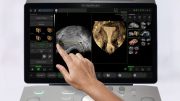The past three years have necessitated quick thinking and a willingness to adapt to change across every industry. But recent economic and geopolitical turmoil has sown fear and disruption, causing short-sighted revenue grabs and poorly planned returns to the office. In 2023 smart business leaders won’t give in to panic but instead will focus on what matters: embracing efforts that stimulate long-term stability and growth.
As we head into the new year, a laser focus on automation will be the defining factor of success. In healthcare, particularly dentistry, creating an integrated digital experience is going to be key in attracting and retaining patients, and for increasing the efficiency of a practice’s operations. Those who commit to building a more automated healthcare experience in 2023 and beyond will be stronger than those who continue on like it’s 2019. Investing in thoroughly planned technical infrastructure will not only reduce overhead and human capital but also elevate the patient experience. Which is perhaps even more critical to the future of healthcare.
No matter what’s coming in 2023, some trends can’t be stopped
Although forecasts for 2023 predict a recession, that doesn’t mean innovation and growth in the healthcare industry are slowing down. In fact, it’s quite the opposite, and the new year is likely to bring robust growth in telehealth, 3D printing and artificial intelligence. What’s more is that maintaining and improving the patient experience while simultaneously reducing the strain on human resources will continue to be a key trend.
Telemedicine has piqued the medical community’s interest since the mid-to-late 2000s. But it was the COVID-19 pandemic that both taught the healthcare industry that telemedicine was possible on a large scale and forced the industry to innovate rapidly and in ways that would otherwise have required decades to adopt. Earlier this year, Cigna found that telehealth has major advantages for patients and providers: it reduces unnecessary ER and urgent care visits by up to 19% and in the case of behavioural healthcare, it can cut the wait for a provider from as much as 48 days down to two or three days.
There has also been a huge boom in 3D printing in both dental and medical spaces. In orthopaedics, for example, custom 3D-printed knee and hip replacements give patients back their joints. In dentistry, 3D printing cuts costs and delivery times and gives providers more flexibility to create whatever the practice, or patient needs. These could be retainers and aligners, crown and bridge models and booming full arch dentistry which can range from full arch complete smiles to dentures and other long-term biocompatible products.
Yet, artificial intelligence will be the crowned champion of 2023 health tech trends. Residence Research reports that the global AI market for healthcare has already reached $15.1 billion, and that figure is expected to increase by more than 75% to $20.65 billion before the end of 2023. That growth is more than just a monetary figure. It reflects positive changes AI is making in healthcare, from helping providers better understand patient needs to creating efficiencies that reduce strain on human resources. Both allow providers to do more of what they do best: take care of patients. Combine that with 3D printing and telemedicine, and you have a changing landscape like never before, poised for more efficiency and improved care.
The expectation of quality customer experience in healthcare isn’t a trend; it’s a demand
Our world has become completely connected. With unending access to information at our fingertips, patients can easily and rapidly share both excellent and mediocre healthcare experiences. A staggering 93% of consumers rely on online reviews to help them make decisions. Moreover, of customers whose expectations aren’t met, one-third expect a response to negative reviews within three days or less. According to a 2022 Emplifi study, a full 86% will abandon your business if they have two less-than-stellar experiences with your business.
There’s no way around it: the customer experience matters more today than ever before. And it will matter more tomorrow than today. While some providers may “get away with” poor customer experience for a while, the moment a competitor jumps in with a better offering they will start “winning” because of shared positive patient stories. In the coming recession, and critically for elective health providers, customer experience is one of 2023’s most important investments.
Creating a positive customer experience starts with embedding it into your healthcare company culture and making it a top priority. Once you’ve done that, it’s as simple as meeting with your technological partner to design a system that will help you meet your goals. Starbucks is a great example: with customer service at the core of its business model, the company developed automated customer experience via the Starbucks app, Uber Eats delivery and the in-store experience model. This integrated system supports the customer at every hour of every day. If Starbucks can do it, why not an industry that is already, at its core, devoted to helping people?
2022 presented new challenges and opportunities for the healthcare sector. Here’s what to expect in 2023
Automation is going to drive healthcare in 2023 and will forever change the way the industry manages complete digital workflows, patient check-in, the processes surrounding the delivery of care, and ultimately the overall patient experience. But it’s not enough to commit to automation. Providers must build the knowledge and understanding to automate care and patient experience in meaningful ways that make the best use of both design & technology together and the creative thinking that is still best done by humans.
While automated check-in presents a unique opportunity, it comes with its challenges. While most patients are ready for the shift to automated processes, age and computer literacy are friction points that I know all too well. My mom and dad are 80+ years old and have difficulty with smartphone and computer check-in. They rely on me to help them. In a healthcare setting, the patient experience will largely be decided by how the staff in a practice handles this friction. The same will be true for disparately impacted communities unfamiliar with this technology, and the friction won’t be limited to automated patient check-in.
But these potential challenges are worth the outcome: a better patient healthcare experience driven by design & technology and shaped by the same care and compassion that goes into the healthcare they receive.
By Paul Vigario, Founder and CEO of SurfCT





